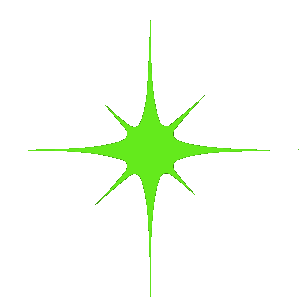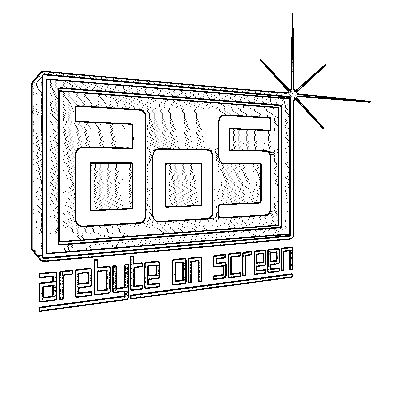The animation video introduces us to the avatars Tessa and Rose. Both characters are the central focus of Katrin Niedermeier’s work “reality island is elsewhere” from 2019 and her revision of it for AOS.
“reality island is elsewhere” (2019) reflects the entanglement of real life and the virtual space, as well as the influence of digital technologies on the human condition.

Tessa and Rose
“I am actually searching for realness and meaning in life. …. I am the humanoid character, slightly irritated and a bit troubled.“
This is how Rose, one of the two characters of my video animation reality island is elsewhere, describes herself in the statement that accompanies this text. Her description refers to the complexity of the relationship to Tessa, who is at the same time the source of her physical presence in the work, and her alter ego.
Tessa is an avatar, a scanned body of a woman, for sale on the internet. Her sales title is “sexy girl character – Tessa – 3D model“, which I purchased for $35.00, including a royalty-free license, with all extended uses. Out of altogether four universal avatar characters for sale – in the categories “military“, “sexy“, “overweight“, and “elderly“ – Tessa is shown posing naked in a living room environment to give an idea of her “life“ and personality. Permanently for sale and purchasable by everyone, the artificial environment that was especially designed for her included supposedly personal photos and belongings of hers, which give a hint of her fictional identity. The design gives the impression of an international background hinting at a sensitive character, who is not quite sure of the situation she is exposed to. The images were taken out of a perspective of a male gaze. In her fictional environment she gives the impression of waiting for sexual intercourse with the user.
Her presentation as readily available substitute of an “ideal“ woman became the starting point of my project featuring fictional characters of Tessa and Rose, both being altered by me from the same source avatar in the process. As evident of Rose’s statement quoted above, I imagined her as a sensitive character not having found her place in life. However, Tessa is rather freed from external constraints actively engaging with her environment. She thus becomes a role model for Rose, an alter ego I created, which embodies the confidence as a reaction to the abusive context out of which she originated in her virtual world. Eventually, it is a construct, a projection which originated in the mind of her creator, who is taking his sources from the physical world he experiences. In this scenario, Rose equals a user for whom Tessa experiences worlds that Rose herself does not have access to. This describes a similar relationship between myself and the avatar “Tessa“.
The avatar has its origin in Hindu religion. “Avatara“ were heralds on earth, sent from gods, re- presenting a human being or an animal. They were to proclaim “truth“ and to help humans in their evolution and spiritual development. Compared to these origins, in the western world, the word ’avatar’ is mostly used in a different context and has a different meaning. It is an artificial character in the virtual world. Through an avatar an individual can be represented, is able to interact in a world of “as if“: to experience a virtual environment even more intensely as would actually be possible in the physical world.
For me, questions of authorship, responsibility, personal identity and even abuse are occupying my recent work. All this strongly influenced my thought process and showed me as to how the virtual space is dominated by male visions, sexism, exclusion and control. In preparation of my work I was inspired by Arthur Rimboud’s collection of poems and the novel biography titled I Is Another. In one section, Rimbaud likens his body with a boat thrown into wild waters, completely vulnerable to its effects. He thus describes the necessity of the artist, who has to endure outside forces and to explore “…the unknown by a derangement of all the senses“ in order to come into contact with himself and beyond. In my work, I similarly expose myself through Tessa and Rose by questioning my identity as a woman, as a mother, as a wife, as a former fashion designer, and ultimately, as an artist.
– Katrin Niedermeier –
Katrin Niedermeier (DE, lives in Weil am Rhein and works in Basel)
*1978, Munich, Germany
In her artistic practice, Katrin Niedermeier investigates the area of humanly constructed spaces of longing, fictitious or of real nature and explores how these ideas manifest themselves in the form of „Arcadian“ gardens, virtual landscapes, avatars or personal fantasies.
Her work shows the ever-changing relations between virtual and physical spaces while its implementation and development is at the intersection of these two areas. Often, digital formats, mostly animations, are the starting points of her works, which she translates into installations, physical objects and paintings allowing a dialogue amongst each other. The virtual world, as an entity with its own authorship, is constantly questioned in Niedermeier’s work and its potential and impact in the analogue and digital realms is explored through it.
Before her studies at the Art Institute at the University of Applied Science in Basel (CH), Katrin Niedermeier studied fashion design at ESMOD in Munich and Oslo and worked as a designer for Christian Dior and Jeanne Lanvin in Paris and Nicky Hilton in Los Angeles.
Recent exhibitions and video screenings include „idle idol monika” Palazzina, Basel (2020), „I and the Machine“ Galerie für Gegenwartskunst, Freiburg, „Avatare, Doppelgänger und allegorische Landschaften“ HEK, Basel (2019) HEK, “Kaliningrad Museum of Fine Arts “, Kaliningrad: “videocity Basel – Kaliningrad”, TBA21-Academy, The Current ll, Chus Martinez, Convening #2: Phenomen- al Ocean Space, Venice, 2019, „ihood“ at Kunsthaus Baselland (2019), „color your color“ Ewha Media Art Presentation, (EMAP), in Seol (2019), at the Hidden Bar during Art Basel in Basel (2019) and the group exhibitions „Hyperconscience“ at Shadok, Strasbourg (2018), „trans environmental exercises“ at Atelier Mondial in Basel (2018) and „Kurs“ in Raum 103 in Basel (2018).

HYPERTENSION presents two projects by artists Katrin Niedermeier and Johanna Bruckner as an exhibition extension, connected to the upcoming exhibition at PYLON-Lab.
What are significant properties that constitute the human body and how will these properties change over time?
If the human 1.0 experienced the technological revolution in the 20th century and the human 2.0 the digitalisation of itself and its surrounding environment, what will it look and feel like to become and be a human 3.0 in the 21st century and a more distant future?
How will human interactions be structured in the future and will they still be experienced viscerally and virtually? What will human communication sound like and what thoughts will be shared?
The artworks newly created for AOS present concepts of the human body in its alignment with its environment, including the virtual space and of its possible future manifestation. The artists’ works visualize and reflect possible current and future scenarios of human expression, intimacy and body related issues in the virtual and the analogue space. PYLON will present video- and text-based works along with graphic content on AOS that are not only the framework, but an integral part of the individual artworks. HYPERTENSION on AOS therefore serves not only as a prologue to the upcoming exhibition at PYLON-Lab IRL but will be an extension and reader, complementing the encounter with the works and helping to immerse in the content on both a notional and reciprocal level.

PYLON is a hybrid of physical art space and online archive for contemporary media and time based art, run by Julia Schmelzer and Thomas Schmelzer.
PYLON encourages its on- and offline audience to engage with experimental approaches of contemporary art in a digitizing time and society through its physical art space PYLON-Lab and its accompanying online platform PYLON-Hub.
PYLON facilitates stimulating and immersive encounters with contemporary media based art by some of the most exciting and innovative contemporary artists. As an art space, PYLON-Lab showcases curated experimental media and interdisciplinary artworks by international artists like Jakob Kudsk Steensen, Elizabeth Orr, Lawrence Abu Hamdan and many others. The works and projects presented via PYLON incorporate distinct approaches to new and emerging media, raising awareness of poly-cultural shiftings, technological and scientific utopias as well as future-oriented technologies and concepts.
PYLON is set to create and share unconventional synapses between art and disciplines such as science, architecture and further social phenomena.

